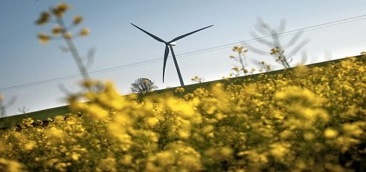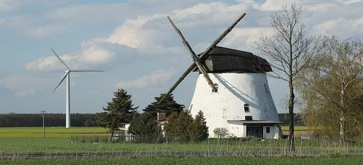Sustainability Renewability Consumption

Welcome to our website. Please read through this section to further familiarize
yourself with the concept of energy sustainability and challenges we face on the
way to achieve it. In the next sections of our website, you will see how we have
taken positive strides towards achieving green energy from recycling and renewing
of traditionally pollutant fossil fuel. We appreciate your time.
Sustainability of energy provision heavily depends on two prominent factors that
dictate characteristics of the flow of energy from its source to its consumption site:
1) the way energy is supplied, and
2) the way energy is consumed.
Higher consumption rates caused by low energy efficiency, entail bigger supply
rates. If consumption rate, and consequently supply rate, exceeds a certain level,
in-time replenishment of the energy source tends to be impossible (energy source
will render not renewable), and sustainability of energy provision may be
compromised.
Energy Renewability
Renewable energy defined as energy that comes from a source which is
constantly replenished through a natural process on a human timescale, at a
rate equal or faster than the rate at which the energy is being consumed. Wind,
rain, sunlight, tides, waves and geothermal heat are renewable energy sources.
Practical application of renewable energy's technical methods and processes
have made them essential contributors to sustainable energy, reducing
dependance on fossil fuel resources, and consequently helping to reduce
greenhouse gas emission. Renewable energy replaces conventional fuels in
four distinct areas: electricity generation (%19 of electricity worldwide), heating
(solar hot water most notably in China), transport fuels (93 billion liters of biofuels
in 2009, equal to %5 of world gasoline production), and rural energy supplies.
Renewable energy technologies can be classifies in three generations:
-
• First generation technologies, some of which are still in extensive use, appeared
after industrial revolution at the end of the 19th century and include hydropower,
biomass combustion, and geothermal power and heat.
-
• Second generation technologies, which are entering the market now, are result
of R&D investments since 1980s. Second generation technologies include solar
heating and cooling, wind power, modern forms of bio-energy, and solar
photovoltaics.
-
• Third generation technologies are still under development and include advanced
biomass gasification, bio-refinery technologies, concentrating solar thermal power,
hot dry rock geothermal energy, and ocean energy.
-
-
First and second generation technologies have entered the market, and third generation technologies heavily depend
-
on long term research and development commitments, where the public sector has a role to play.
Energy Efficiency
Efficiency is capability of performing or functioning in the best possible manner with the least waste of time, material, and
energy to produce the desired result. Energy efficiency refers to use of less energy for provision of the same service.
Something is more energy efficient if it delivers more services for the same energy input, or the same service for less
energy input. For example, when a compact florescent light (CFL) bulb uses less energy than an incandescent bulb to
produce the same amount of light, the CFL is considered to be more energy efficient.
Energy efficiency offers a powerful and cost-effective tool for achieving a sustainable energy future. Improvements
in energy efficiency can reduce the need for investment in energy infrastructure, cut energy bills, improve health,
increase competitiveness and improve consumer welfare. Environmental benefits can also be achieved by the reduction
of greenhouse gases emissions and local air pollution. Energy security can also profit from improved energy efficiency
by decreasing the reliance on imported fossil fuels.
Given these facts, sustainability of energy provision is the utilization of accessible energy resources to satisfy our
existing needs today without depriving our children of their potentials to meet their needs tomorrow. Sustainability
of energy provision is upholding the flow of energy at a certain rate from its sources to cope with current circumstances
while defending the ability of future generations to alleviate and rectify their possible energy deficiencies. Sustainability
of energy provision combined with elimination or at least reduction of its induced environmental pollution to a minimum, is
the promise of leaving a better world to the generations to come. Sustainability of Green Energy provision is the
realization of "Live and Let the Others Live".
Home > Sustainable Energy Supply

Copyright ©2014 Team ReNewin. All Rights Reserved.



Clean & Green






